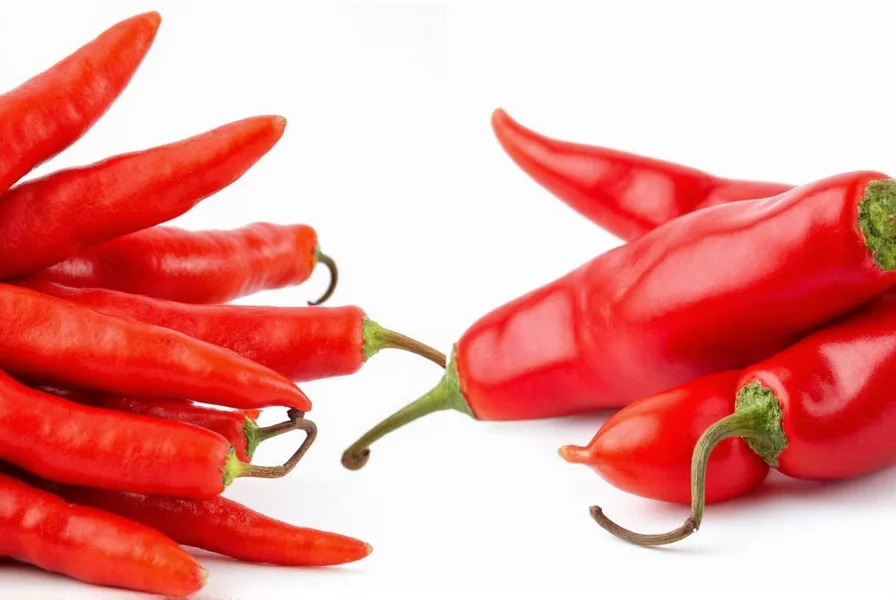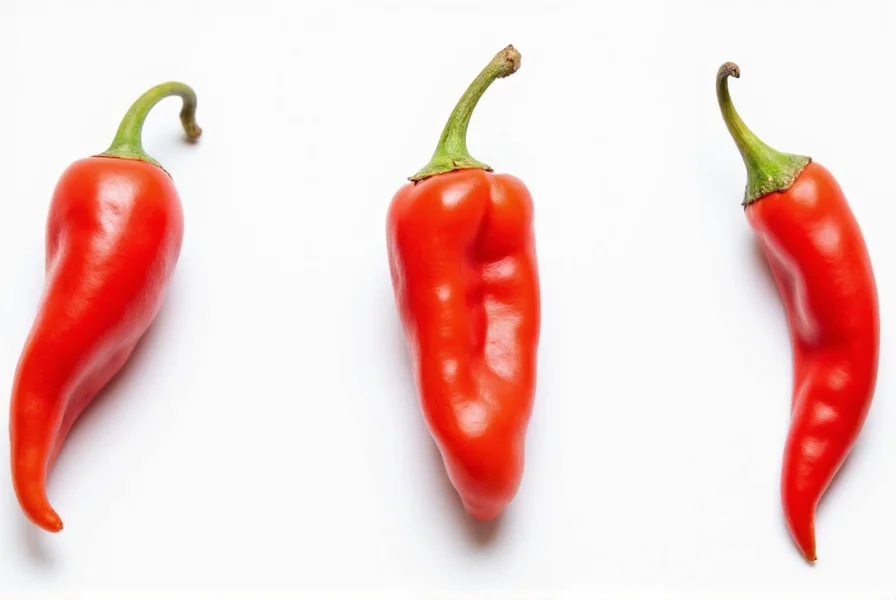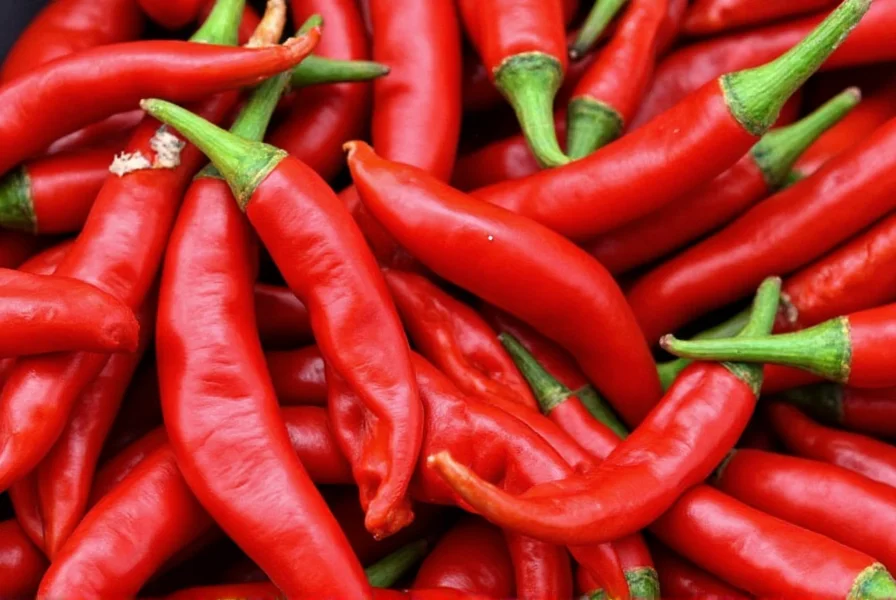Understanding the distinction between cayenne pepper and red pepper is essential for both home cooks and culinary professionals. While these terms are often used interchangeably in recipes, they represent different products with distinct characteristics that can significantly impact your dishes.
What Exactly Is Red Pepper?
The term “red pepper” creates confusion because it has multiple meanings in culinary contexts. In its broadest sense, red pepper refers to any matured chili pepper that has turned red during ripening. However, when found in spice aisles, “red pepper” typically means one of two things:
- Crushed red pepper flakes: A mixture of various dried, crushed red chili peppers (often including cayenne, but also others like serrano or jalapeño)
- Paprika: A ground spice made from milder red peppers, which can range from sweet to hot varieties
This ambiguity explains why many home cooks mistakenly believe cayenne and red pepper are identical. The reality is more nuanced.
What Makes Cayenne Pepper Unique
Cayenne pepper specifically comes from the Capsicum annuum var. avescum species, named after the city of Cayenne in French Guiana. Unlike generic red pepper blends, authentic cayenne is:
- Made exclusively from ripe cayenne peppers
- Consistently hot (30,000-50,000 Scoville Heat Units)
- Finely ground to a uniform powder
- Bright red with slightly fruity, smoky notes beneath the heat

Key Differences Between Cayenne Pepper and Red Pepper
| Characteristic | Cayenne Pepper | Crushed Red Pepper |
|---|---|---|
| Composition | 100% cayenne peppers | Mixture of various red chili peppers |
| Texture | Fine, uniform powder | Coarse flakes with seeds and skins |
| Heat Level | Consistently hot (30,000-50,000 SHU) | Variable (5,000-30,000 SHU depending on blend) |
| Flavor Profile | Sharp heat with subtle fruitiness | Complex with varying smoky, earthy notes |
| Common Uses | Seasoning blends, hot sauces, precise heat control | Pizza, pasta, Mediterranean dishes, visible texture |
Can You Substitute One for the Other?
Understanding the difference between cayenne pepper and red pepper is crucial when substituting. While possible, substitutions require adjustments:
When replacing cayenne with red pepper flakes, use 1.5-2 times the amount since flakes are less concentrated. Conversely, when substituting cayenne for red pepper flakes, start with half the amount and adjust to taste. The difference between cayenne pepper and crushed red pepper becomes particularly important in delicate dishes where heat balance matters.
For those wondering “is cayenne pepper hotter than red pepper,” the answer depends on the specific red pepper product. Pure cayenne consistently delivers more heat than most commercial red pepper blends, but some specialty red pepper products may match or exceed cayenne's heat level.
Common Misconceptions Clarified
Several myths persist about these spices. Understanding what is the difference between cayenne and crushed red pepper helps dispel confusion:
- Myth: “Red pepper” always means cayenne pepper
Fact: In American supermarkets, “red pepper” usually refers to crushed red pepper flakes, which may contain cayenne but also other peppers - Myth: Cayenne and red pepper come from different plant families
Fact: Both come from Capsicum annuum species, but different cultivars - Myth: The terms are completely interchangeable in recipes
Fact: Substitutions require quantity adjustments due to heat and texture differences
Practical Usage Tips
Knowing the difference between cayenne pepper and red pepper helps you use them effectively:
- Use cayenne when you want consistent, predictable heat throughout a dish
- Choose red pepper flakes when you want visible spice elements and varied heat bursts
- For those asking “can I substitute cayenne for red pepper,” remember that cayenne provides more concentrated heat
- Store both in airtight containers away from light to preserve potency
- When following international recipes, verify which “red pepper” the author means

Final Clarification
To definitively answer “is cayenne pepper the same as red pepper”: cayenne is a specific type of red pepper, but not all red peppers are cayenne. The difference between cayenne pepper and red pepper flakes particularly matters in cooking precision. When a recipe calls for “red pepper,” check whether it means crushed flakes or ground powder, as this dramatically affects both appearance and heat distribution in your final dish.
Frequently Asked Questions
Is cayenne pepper the same as crushed red pepper?
No, cayenne pepper is not the same as crushed red pepper. Cayenne is a specific type of chili pepper ground into a fine powder, while crushed red pepper typically contains a blend of various dried red chili peppers in flake form. The difference between cayenne pepper and red pepper flakes affects both heat level and texture in cooking.
Can I use red pepper instead of cayenne in recipes?
Yes, but with adjustments. Since crushed red pepper is generally milder than cayenne, you'll need to use about 1.5-2 times more red pepper flakes to achieve similar heat. When substituting cayenne for red pepper flakes, start with half the amount and adjust to taste. Understanding the difference between cayenne pepper and red pepper helps prevent over-spicing.
Which is hotter: cayenne pepper or red pepper?
Pure cayenne pepper is typically hotter than most commercial crushed red pepper blends. Cayenne measures 30,000-50,000 Scoville Heat Units, while red pepper flakes usually range from 5,000-30,000 SHU depending on the specific blend. However, some specialty red pepper products may match cayenne's heat level.
What's the main difference between cayenne and paprika?
The primary difference is heat level. Cayenne is consistently hot (30,000-50,000 SHU), while paprika ranges from sweet (0-500 SHU) to hot varieties (up to 30,000 SHU). Both are ground red peppers, but cayenne comes specifically from cayenne peppers, whereas paprika typically comes from milder pepper varieties. This distinction matters when understanding what is the difference between cayenne and crushed red pepper.











 浙公网安备
33010002000092号
浙公网安备
33010002000092号 浙B2-20120091-4
浙B2-20120091-4